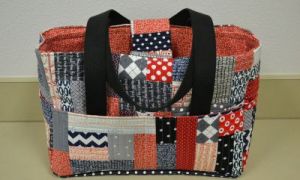What an exciting time... your baby is finally moving on from milk to solids. This is a crucial stage in your baby's development. From now on, the rapid growth and development of your baby requires more nutrients that milk alone cannot provide. It is also important to remember that starting on solids is an ongoing process where you have to pay special attention to any food allergy symptoms that your baby may present.
When To Start On Solid Foods For My Baby
It is recommended that your baby should be breast fed up until 6 months of age. This is due to the fact that your breast milk provides your baby with all the nutrients they need up until this stage. After 6 months of age your baby will begin growing and developing at a fast rate so your baby will need more nutrients than those found in milk. However once again it is up to you when to start on solids. It is important to note that solid foods should not be introduced to your baby before 17 weeks as a baby's digestive system is too immature to cope.
Below is a checklist you could use to determine whether it's time to start your baby on solids. This is to be used as a general guide only. If you have any questions or concerns regarding your baby's eating habit, please speak to your doctor.
Introducing Solids Checklist
- Your baby still seems hungry after a feed from either breasts or formula milk.
- Your baby wakes up early or during the night, when previously slept through.
- Your baby chews their hands or tries to put things in their mouth.
- Your baby seems restless and grizzly.
- Your baby stares at you while you are eating.
If your baby has shown any of the above signs then it's time to start introducing solid foods.
Introducing The First Meal
Below are some strategies you could use when starting on solids. These strategies will assist you when feeding your baby solids.
- Most parents recommend try feeding your baby solids after your baby's morning sleep. Babies are usually more receptive during this time.
- Offer your baby just a small milk feed or a feed from one breast to take edge of their appetite (a hungry baby cannot be easily persuaded to try solids).
- Half fill a small soft edge baby spoon and offer it to your baby.
- If most food dribbles back out of your baby’s mouth, don't worry, it will take a little time for your baby to master eating from a spoon.
- Encourage your baby with face to face interactions. This will make feeding for your baby a pleasurable experience.
Although your baby will have been fed on demand until now, it is important that the introductions of solid foods are more structured. To start off with, introduce a mini-meal mid morning then introduce a second a couple of weeks later. After introducing the second meal, a couple weeks later, you can build up to a third meal. Don't be tempted to increase the meals too quickly as your baby's digestive system needs time to adjust.
When your baby is happy with eating puree foods, slowly move to slight coarser mashes. Once your baby is eating those happily, offer mixtures with smooth, easy to chew lumps. Once your baby has accepted this, you can begin introducing finger foods.
What Are The Best Foods To Start With?
The best food to start off with is baby rice. It is sold in a powdered form and is quick and easy to prepare. The taste and texture of baby rice is similar to milk, so it appeals more to babies.
Once your baby is happy with that, you could try mixing it with apple purée. Cooked and mashed potato, zucchini, carrot, pumpkin, broccoli and sweet potatoes are all great first foods to try, building a range of different tastes and textures.
Boiling VS Steaming
Some vitamins and minerals (from fruits and vegetables) do leak out into the cooking water when they are boiled. When using a minimal amount of water while boiling and using the same water when pureeing the foods, it is good nutritionally just like steamed foods. While steamed foods don't lose any vitamins or minerals into the cooking water, most foods will need pureeing with boiled water, expressed milk or formula milk to get the texture right.
Homemade VS Commercial Foods
There are advantages to both. When you prepare your baby's food yourself, you can use fresh ingredients that have maximum food value. Your baby will get use to home cooking from the start and have a wider variety of tastes and textures.
The advantages of commercial food are convenience and reduced wastes by opening only small quantities at a time. Additives and preservatives are limited and the ingredients are screened.
Baby's Nutritional Needs
The tips below will give you an idea on how to make sure your baby gets all the right Nutritional needs.
Revitalize your tired child – with a miniature cheese sandwich, warm milk or diced cheese or sliced apple.
Natural fat – from whole milk, cheese and other full fat dairy food provides energy used by the body, plus Vitamins A and D.
Sliced fruit / raw vegetable sticks – as a healthy snack between meals. Slice, dice or mash them and add to breakfast cereals. It is important to give your child plenty of fruits and vegetable throughout the day as vitamin C cannot be stored by the body.
Vary grains – in your baby's foods. Include a small portion with every meal. You could try offering porridge and rice cakes as an alternative to bread at lunch and rice or couscous in place of pasta.
Fibre is important for healthy bowels – too much can cause important vitamins and minerals to be flushed straight out before they can be absorbed. Give your baby foods that contain soluble fibre such as fruits, vegetables and oats.
Here is a list of your baby's daily nutritional needs. This will give you a basic understanding of the nutrients your baby will require when starting on solids
Up To 6 Months:
- Milk is still providing your baby with all the nutrients.
- At 6 months, you can begin starting on solids from a spoon.
6 – 9 Months:
- Food now needs to provide your child with the necessary nutrients.
- Iron and Zinc are important during this stage. Include two portions of fruit and/or vegetable into your baby's daily meals.
9 – 12 Months:
- Try to include three to four mini-servings of fruit and vegetables (served as fruit juice or cooked).
- Include one mini–serving of starchy food per meal – breakfast cereal, rice, potato or pasta.
- Include two protein foods – meat, fish, eggs, lentils, cheese or tofu.
Food Allergies
A food allergy is a hypersensitive reaction to a normally harmless substance in food and is quite common in babies and children. Some children are more likely to have an allergic reaction triggered by a particular food. Those most at risk are babies from families with a history of allergies. By the time a child is 2 years old, they would have more than likely grown out of their allergy. However other children will have a food allergy throughout their life.
It is important to remember that when starting on solids, new foods should be introduced one at a time. A family history of food allergies may double your baby's risk of having an allergy, so please consult your doctor on what to do.
If you think your baby is reacting to a certain food – with pains, diarrhoea, rashes or vomiting after eating – even though you may have no family history of allergies, trust your instincts and go straight to the hospital.
This is a great opportunity for you to start developing your baby's taste buds to different tastes and textures. Your child will grow up and may enjoy the simple tastes of home cooking or enjoy the complexity of tastes in fine dining. What types of food your child enjoys depends on you and the different tastes your child will experience as you expand your child's taste buds into a multicultural food crazy world!










